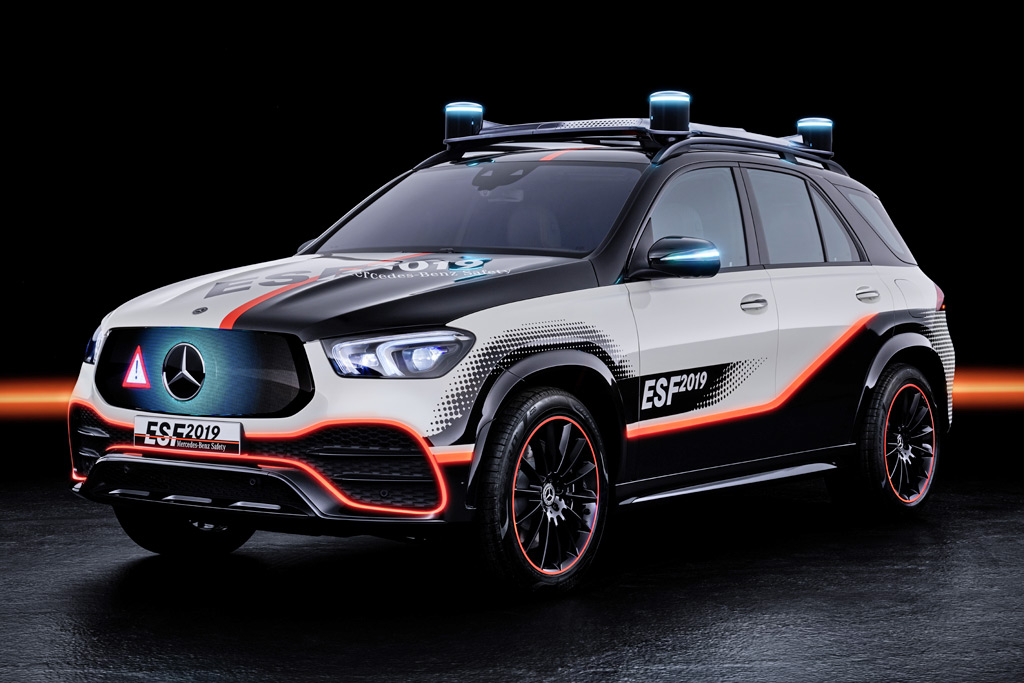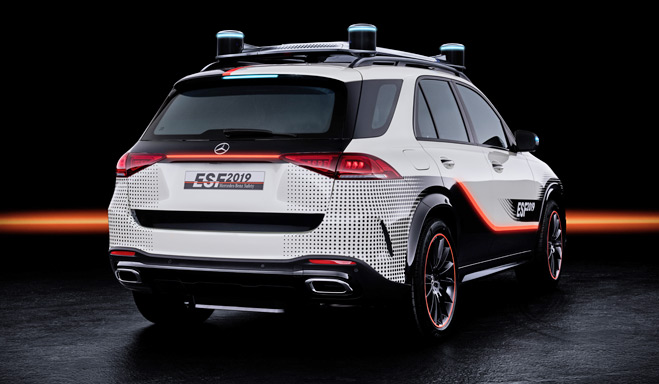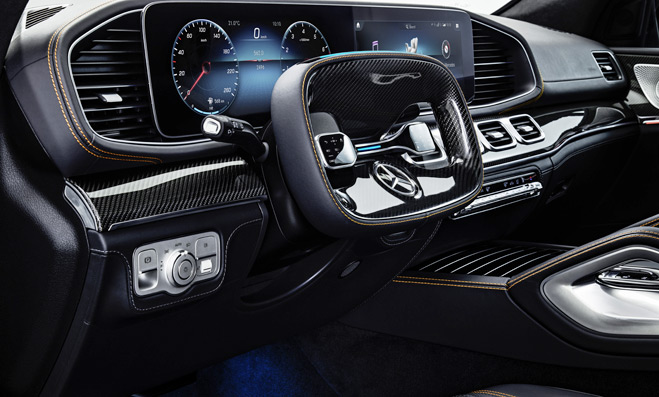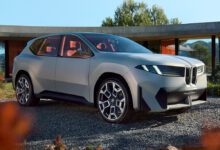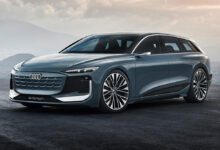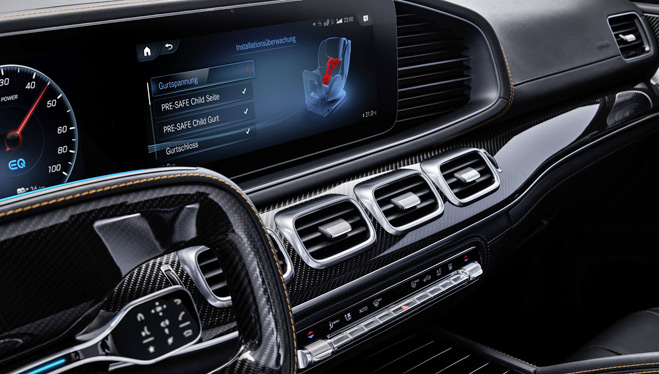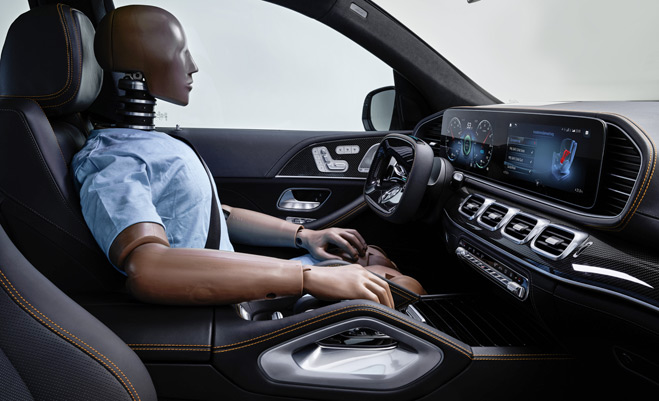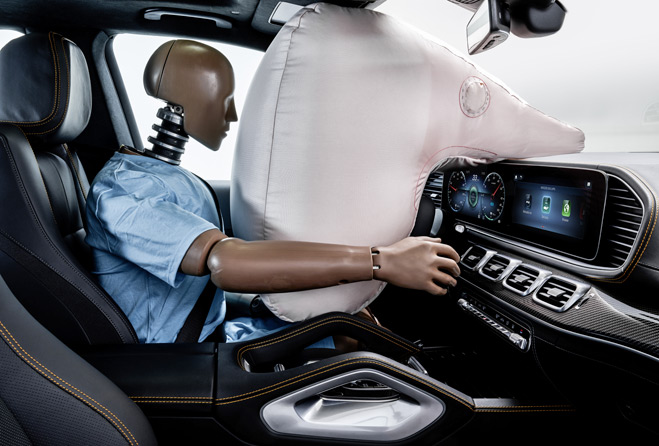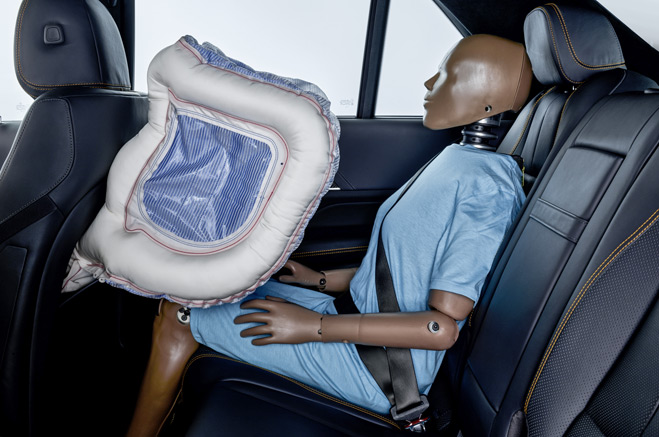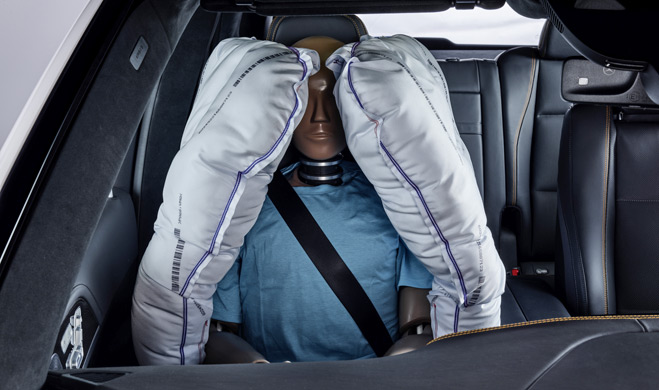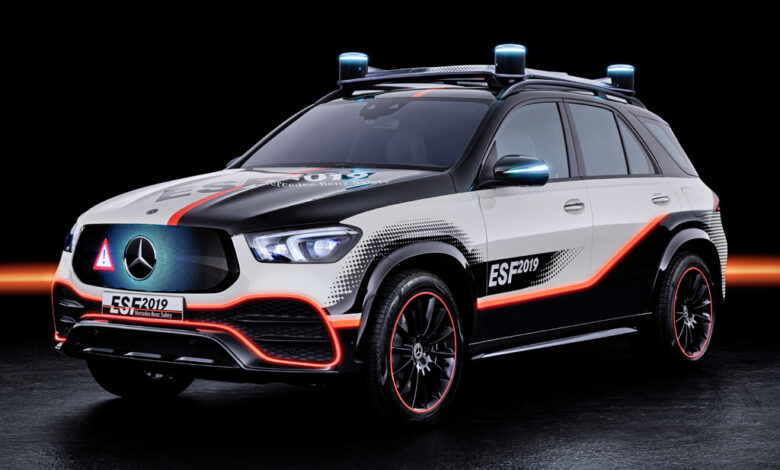
Mercedes of the future - a new dimension of car-environment connection
Assistance systems can help prevent and mitigate accidents. The 2019 Mercedes-Benz ESF research vehicle shows how to better protect pedestrians and cyclists. It is equipped with Active Brake Assist with enhanced functionality and an improved version of the 360° camera system. As a result, when parking and maneuvering, the car warns the driver as soon as there is a risk of colliding with a pedestrian or cyclist, or initiates automatic braking. And with LED panels and projectors, ESF 2019 builds confidence in automated vehicles by connecting with the environment – it can reach out to vulnerable road users, informing them and warning them of dangers. Even when parked on the side of the road.
Mercedes-Benz ESF 2019
Eye contact is a basic element of communication in traffic. Usually we rightly believe that the person who sees us will pay attention to us. We don't have that level of relationship and experience with automated vehicles. That's why Mercedes-Benz considers empathy and trust to be key factors in gaining acceptance for autonomous driving. In order for people to gain trust in automated vehicles, they must immediately and intuitively recognize what the vehicle intends to do, that is, gain so-called conscious trust. ESF 2019 takes into account the behavior and reactions of vulnerable road users to a large extent. Its sensors, the development of which, of course, continues, since we are dealing with an experimental car, not only monitor the traffic situation, but also provide multidirectional communication of the car with the environment. As a result, he not only clearly states his intentions, but also warns other road users. Even parked at the curb - just like a vigilant passerby.
“I saw you”, “I will stay here”, “Attention, traffic jam” or “Go first” - these and similar messages from drivers are constantly transmitted to other road users. ESF 2019 does the same with turquoise lighting. This creates conscious trust. Communicates with the environment through:
- large front panel
- LEDs on sensor modules on the roof
- direction indicators in the side mirrors
- third stop light
- rear window projector
Messages and warnings are conveyed through animation and symbols. In addition, alerts have a red border to draw your attention. ESF 2019 clearly states, for example, that a pedestrian may cross a road or give way to another vehicle. It can even warn oncoming traffic of impending danger.
The ESF 2019 is also equipped with the revolutionary DIGITAL LIGHT lighting technology with virtually glare-free high beams in HD quality – with a resolution of over 2 million pixels. In addition, the innovative algorithm-driven DIGITAL LIGHT technology makes it possible to create characters in HD quality on the road surface, such as traffic signs. as an additional signal to the driver.
And because the ESF 2019 has a plug-in hybrid drive, its sensor system is not dependent on the internal combustion engine to power it. Thus, the test vehicle can control the movement even when it is connected to the charging station. So he can warn car drivers about careless pedestrians or inform a driver turning back about an approaching cyclist. At the same time, the warning functions also serve the safety of pedestrians or cyclists.
Studies have shown that pedestrians enjoy turquoise as the color of communication.
Of particular importance for informing pedestrians are circular light signals. This is the result of several lighting studies conducted by Mercedes-Benz in Sindelfingen and at the test and technical center opened in Immendingen in September 2018, using a shared S-class vehicle. The studies examined how pedestrians react to highly automated vehicles in various situations. , road. It turned out that light signals have a decisive influence on the feeling of one's safety and the acceptance of automatic vehicles. Most participants preferred the turquoise light signals and their 360-degree presentation.
The results of these studies are Mercedes-Benz's contribution to the discussion on "Automated and autonomous driving" led by SAE, an international association of engineers that, for example, develops and proposes norms and standards in the field of mobility. The color turquoise, previously unused in the automotive industry, is what Mercedes-Benz recommends for indicating automatic driving mode and for communicating with the environment.
Rear View Ads: Rear Window Projections
The rear window of the ESF 2019 also plays an important role in interaction with other road users. They are equipped with a membrane that changes color from transparent to milky if necessary, and then can be used as a projection screen for a laser projector placed in the trunk. In addition to displaying symbols and text, this screen can even display the image from the front camera in the rear window. For example, if the ESF signals to a pedestrian in front that it is safe to cross the road, the driver of the vehicle behind sees a symbol in the rear window indicating the reason for the stop and a projection of the camera image showing the pedestrian. front. In this way, the ESF clearly communicates its behavior and warns drivers from behind not to overtake it.
Protecting pedestrians and cyclists
The 2019 ESF also features Active Brake Assist (ABA) with advanced features. This system provides additional protection, especially in potentially dangerous traffic situations involving unprotected road users. During a turn, ABA can now detect pedestrians and cyclists traveling parallel to the original direction of travel. If there is a risk of collision with pedestrians crossing the curved road, the driver receives a visual and audible warning. If there is no reaction on his part, the autonomous braking function is activated. The same is true if cyclists find themselves in the blind spot when turning right.
If there is a threat of a collision with side traffic when turning or crossing the road, the ABA can prevent the car from moving away and, if necessary, stop it (even from rolling speed) by autonomous braking. Before driving, the driver will receive a visual cross-traffic warning. In the event of a real danger, you will receive a visual and audible warning. If the driver still does not respond, the brakes are locked or acceleration is limited to avoid a collision. If the need arises, if the launch results in an accident, autonomous intervention will bring the moving vehicle to a halt.
360° pedestrian protection: safer parking and maneuvering
Pedestrian protection has the highest priority at Mercedes-Benz. A new feature is 360° Pedestrian Protection, which warns of hazards and assists in parking and maneuvering if there is a risk of collision with stationary or moving road users (pedestrians, cyclists) in the vehicle's path, up to autonomous braking. Works both when driving forward and when reversing, and even when a pedestrian is on the side of the car.
Already today, many production models offer a 360° camera system to assist the driver when maneuvering in unfamiliar surroundings. It uses images from four cameras located in the front and rear of the body, as well as in the mirror housings. It creates a bird's eye view of the vehicle and its surroundings.
In ESF 2019, camera data is used not only to display an image on the operating system screen - it is combined with information from other sensors. It is only by combining all this data that an environmental model can be created that meets Mercedes-Benz's high safety requirements and provides autonomous braking if the driver does not heed the vehicle's warnings. Even today, autonomous braking in front of obstacles such as pedestrians crossing a parking space is possible if the maneuver is performed with Active Parking Assist Active Parking Assist with PARKTRONIC. In ESF 2019, autonomous braking also occurs when the driver maneuvers the car, i.e. when the parking procedure is not automatic.
Photo: Mercedes-Benz

